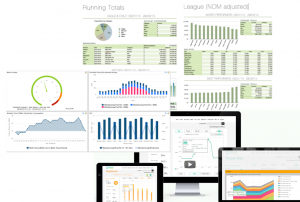Don’t fall into the data trap
By Richard Felgate, EMA Chairman
“What miles per gallon will it do?” This is a question nearly everyone will ask when buying a new car, van or HGV. It’s also one of the most popular measures used to assess relative performance, particularly amongst large fleet operators. Why is this so widely used? Well, the data is easy to access and in a common format, all we need is miles travelled and gallons used and we have the answer. Most vehicles will now even work it out for you and give you that information right in front of you on the dashboard. The main points here are – the information is readily available, it’s in a consistent format and it’s easy to display so people get real time feedback on how they’re performing. It’s also simple!
Now buildings in reality are no different; basic consumption data is available in a consistent format (kWh), there’s also usually a basic metric such as floor area, sales or units of production available, but consumption performance is still rarely measured, particularly in SMEs and people still rarely ask “what energy will it consume?” How crazy is this when for most businesses the energy consumed by their building and processes will be far greater than that of their vehicles.
Why is this the case? The answer lies in the data.
Most businesses have the data, in many cases they probably have too much, but in a lot of cases it’s not used at all – why? There are often several reasons:
- – The data is not easily accessible.
- – There is a delay in getting the data.
- – There is so much data; it is hard to focus on what’s most useful.
- – The analysis of the data isn’t simple; there are too many variables.
- – The resources aren’t available to carry out analysis and evaluation.
- – There’s no mechanism for feeding back performance to those involved.
- – We don’t have the means to address the opportunities highlighted.
So why do businesses so often end up in this situation? What do they need to do in order to make the data work for them in delivering savings in the same way as MPG does for drivers?
In many cases there’s been no forward planning, no assessing the business needs and capabilities when procuring data and the result is that the data available is not matched to the business’s needs. The data available is often that provided by the utility supplier and therefore to their specification, it might be what was installed to comply with Part L regulations and therefore to a minimum specification required to achieve compliance, or it might have been procured after seeing visuals of fancy dashboards and data displays. Whatever the case is, it is unlikely that it was specified with desired functionality and outcomes in mind.
To get the best from any data and in order to deliver real, lasting savings the most important advice will be to establish what the end goal is. Some basic questions need to be asked and these will include:
- – What are we trying to achieve?
- – What resources do we have to carry out the analysis?
- – How can we effectively present the performance information?
- – What ability do we have to make changes to improve performance?
Only when a business has answered these questions and committed the required resource are they in a position to specify their data, analysis and reporting requirements and seek a suitable provider.
In the same way as MPG, often the simplest solution will be the most effective, so don’t get carried away with trying to cover every performance metric or having a performance dashboard that resembles a jumbo jet. Concentrate on one or two measures, set realistic targets and provide quick feedback on performance. By doing that you’ll be taking the first step of turning that data into savings.
If you are keen to learn how to maximise the savings that can be achieved from the effective use of energy data, then look out for the forthcoming EMA course on Turning Data into Energy Savings. Using real examples this course will help you establish your data requirements and the different ways to deliver real measurable savings. The next available course date is 11 May 2017 in London. Apply to attend this course.
